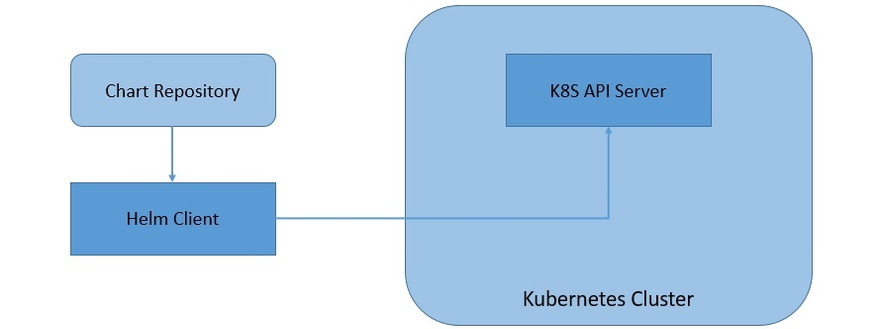Q1 - What is helm?
Answer - Helm is a package manager for Kubernetes.
Q2 - Top 5 reason for using helm?
Answer - 1. Application Packaging
2. Simplified Deployment
3. Configuration Management
4. Versioning and Rollbacks
Q3 - How helm works? Include some pic
Answer - Helm uses charts to package applications and provides a client-side interface for installing, configuring, and managing Kubernetes resources
Q4 - Helm Architecture? Include some pic
Answer -
Q5 - What is chart and what it contains?
Answer - In the context of Helm, a chart is a package that contains all the files and metadata necessary to deploy and manage an application on a Kubernetes cluster. A chart encapsulates the entire application's Kubernetes resources and their associated configurations.
A chart typically consists of the following components:
1) Chart.yaml: This file contains metadata about the chart, including its name, version, description, maintainers, and other relevant information. It provides essential information about the chart's identity and properties.
2) Values.yaml: This file contains a set of default configuration values for the chart's templates. These values can be overridden during installation or upgrade, allowing users to customize the deployment based on their specific needs. Values.yaml supports parameterization, enabling users to define variables that can be used within the chart's templates.
3) Templates: The templates directory contains the Kubernetes manifests written in YAML format. These templates define the desired state of Kubernetes resources such as deployments, services, config maps, ingress rules, and more. The templates may include placeholders for configuration values defined in Values.yaml, allowing for dynamic customization during installation.
4) Helpers: The helpers directory (optional) contains reusable template snippets and functions that can be used within the chart's templates. These helpers provide convenience and allow for modular and maintainable chart development.
5) Charts (sub-charts): Charts can have dependencies on other charts, which are referred to as sub-charts. Sub-charts are themselves Helm charts that are packaged and versioned independently. They can be included within a parent chart to compose more complex deployments and manage interdependent applications.
License, README, and other files: Charts may include additional files such as license information, README files, or any other documentation specific to the chart.
Together, these components make up a Helm chart. Charts provide a standardized and portable way to package, distribute, and deploy applications on Kubernetes clusters. They promote code reusability, configurability, and versioning, enabling users to easily share, install, and manage applications using Helm.


Top comments (0)